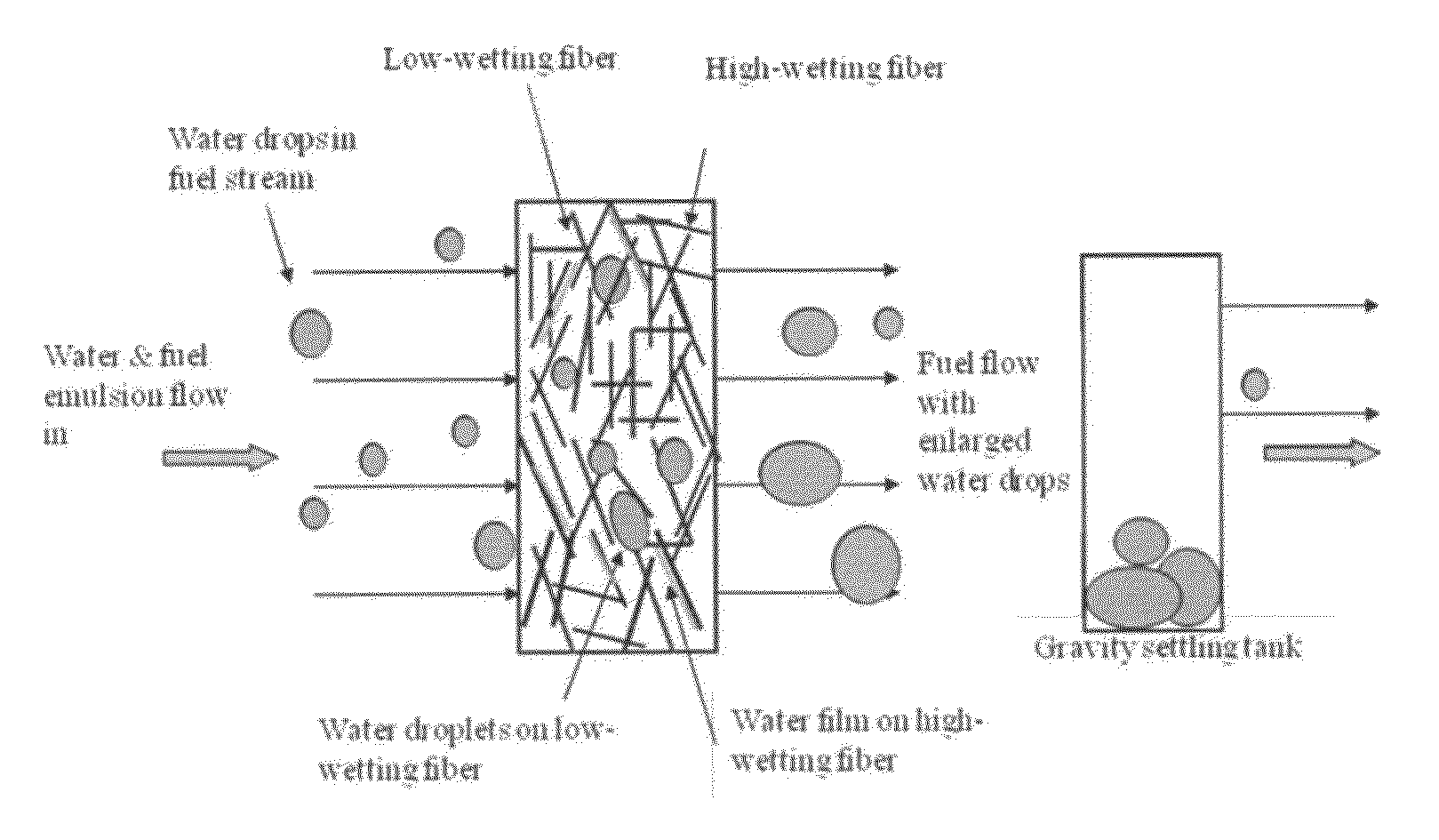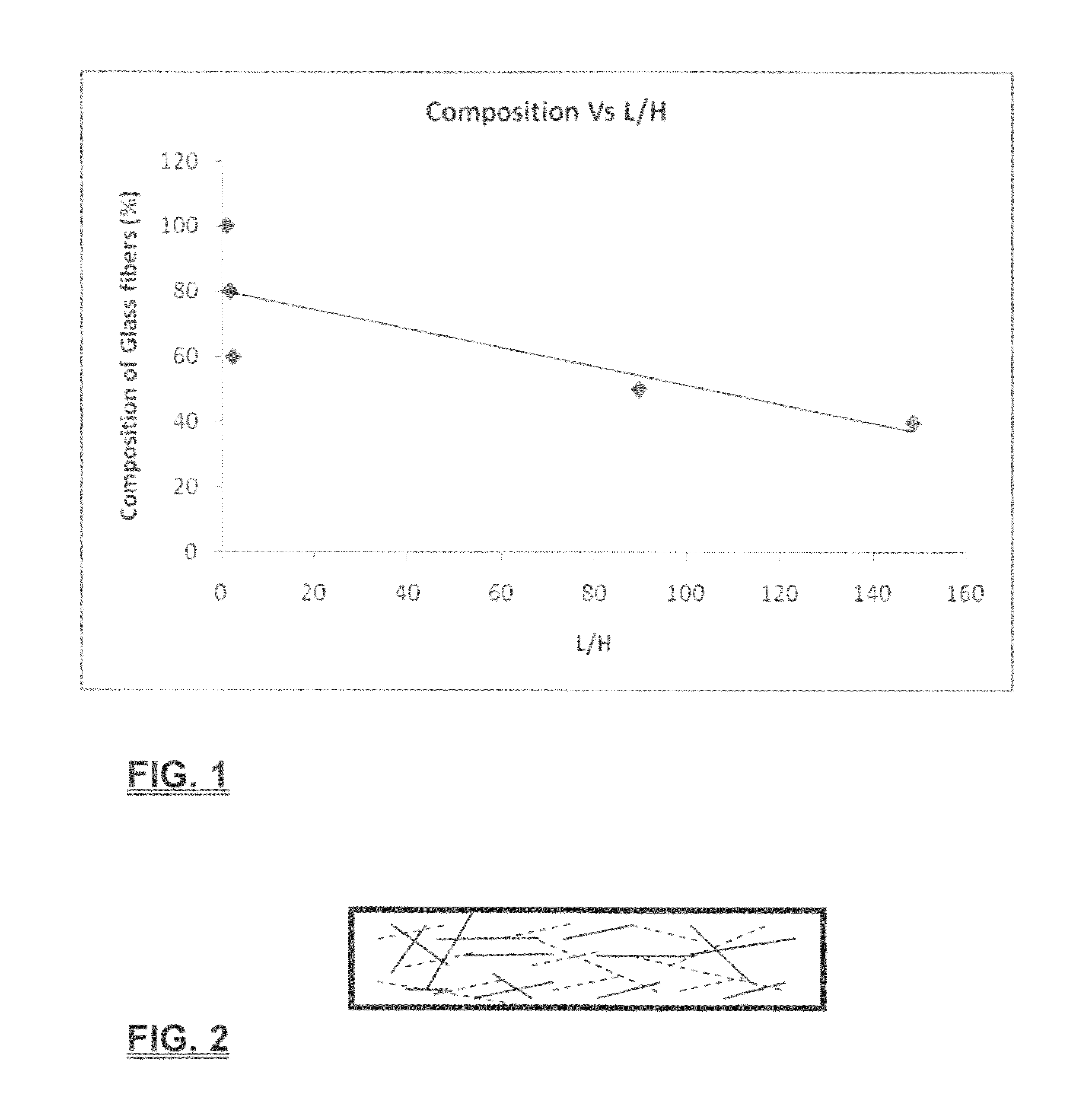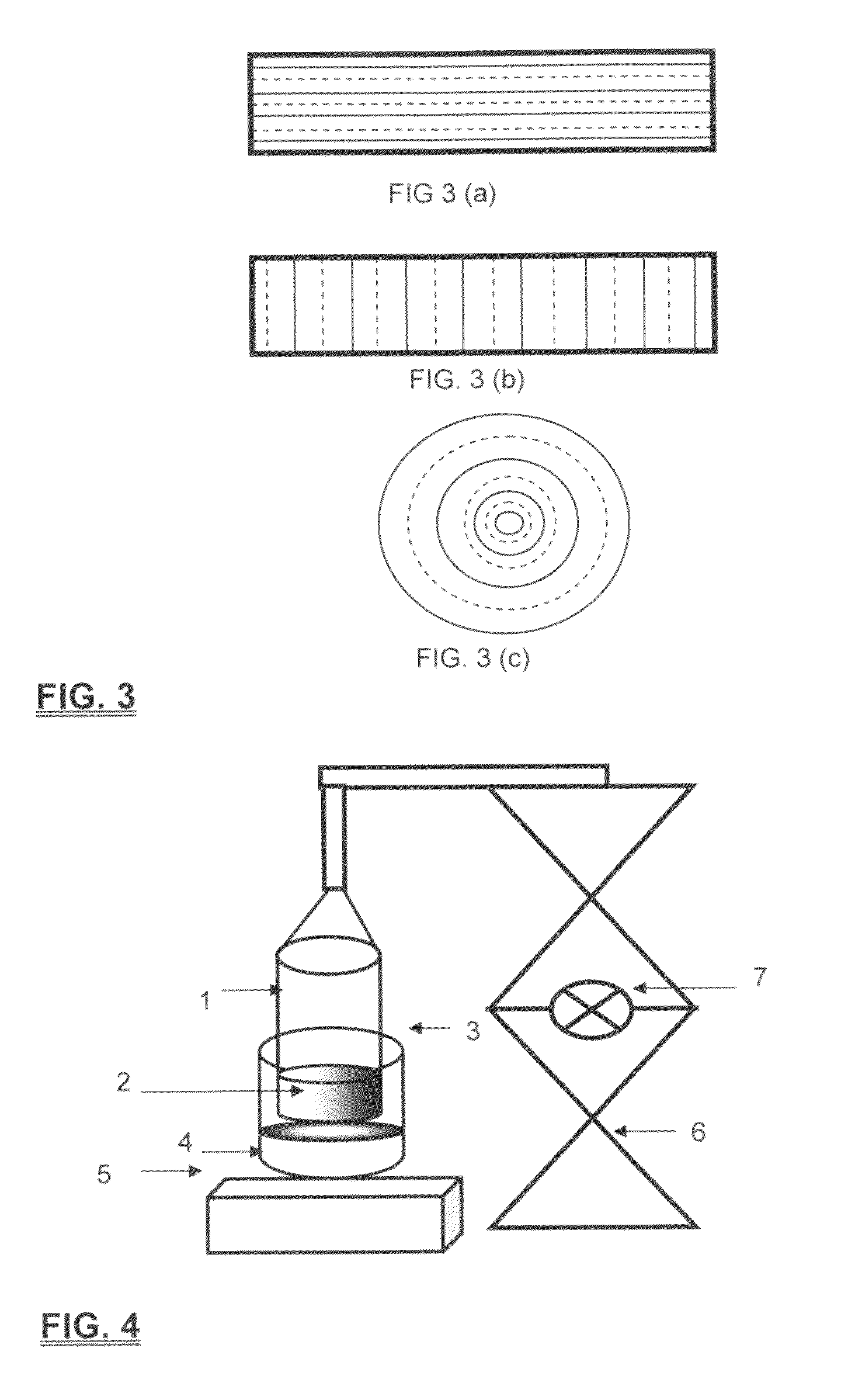Mixed hydrophilic/hydrophobic fiber media for liquid-liquid coalescence
a fiber media and hydrophilic technology, applied in the direction of gravity filters, separation processes, filtration separation, etc., can solve the problem that the method of measuring contact angles does not work
- Summary
- Abstract
- Description
- Claims
- Application Information
AI Technical Summary
Benefits of technology
Problems solved by technology
Method used
Image
Examples
Embodiment Construction
[0062]The filters of the present invention can exist in many sizes, shapes and forms. The one or more hydrophobic fibers and the one or more hydrophilic fibers can generally either be mixed, or exist in separate layers. When mixed, the hydrophilic fibers and the hydrophobic-fiber types are blended so that within a small sample volume of the filter both types of fibers are present such as indicated in FIG. 2. In one embodiment a slurry of the fibers can be vacuum molded to form the filter. Non-woven filters typically have binders (glues) to hold the fiber structure together. Binders tend to stick to one type of fiber or the other. Being of similar chemical materials, the binders often have surface properties similar to the fibers that they stick to which aids in the construction of the filter and its wetting properties. The amounts of binders blended with the fibers are generally in proportion to the amount of each fiber type. Because the fibers are well blended, when the binders glu...
PUM
| Property | Measurement | Unit |
|---|---|---|
| diameter | aaaaa | aaaaa |
| diameter | aaaaa | aaaaa |
| drop sizes | aaaaa | aaaaa |
Abstract
Description
Claims
Application Information
 Login to View More
Login to View More - R&D
- Intellectual Property
- Life Sciences
- Materials
- Tech Scout
- Unparalleled Data Quality
- Higher Quality Content
- 60% Fewer Hallucinations
Browse by: Latest US Patents, China's latest patents, Technical Efficacy Thesaurus, Application Domain, Technology Topic, Popular Technical Reports.
© 2025 PatSnap. All rights reserved.Legal|Privacy policy|Modern Slavery Act Transparency Statement|Sitemap|About US| Contact US: help@patsnap.com



